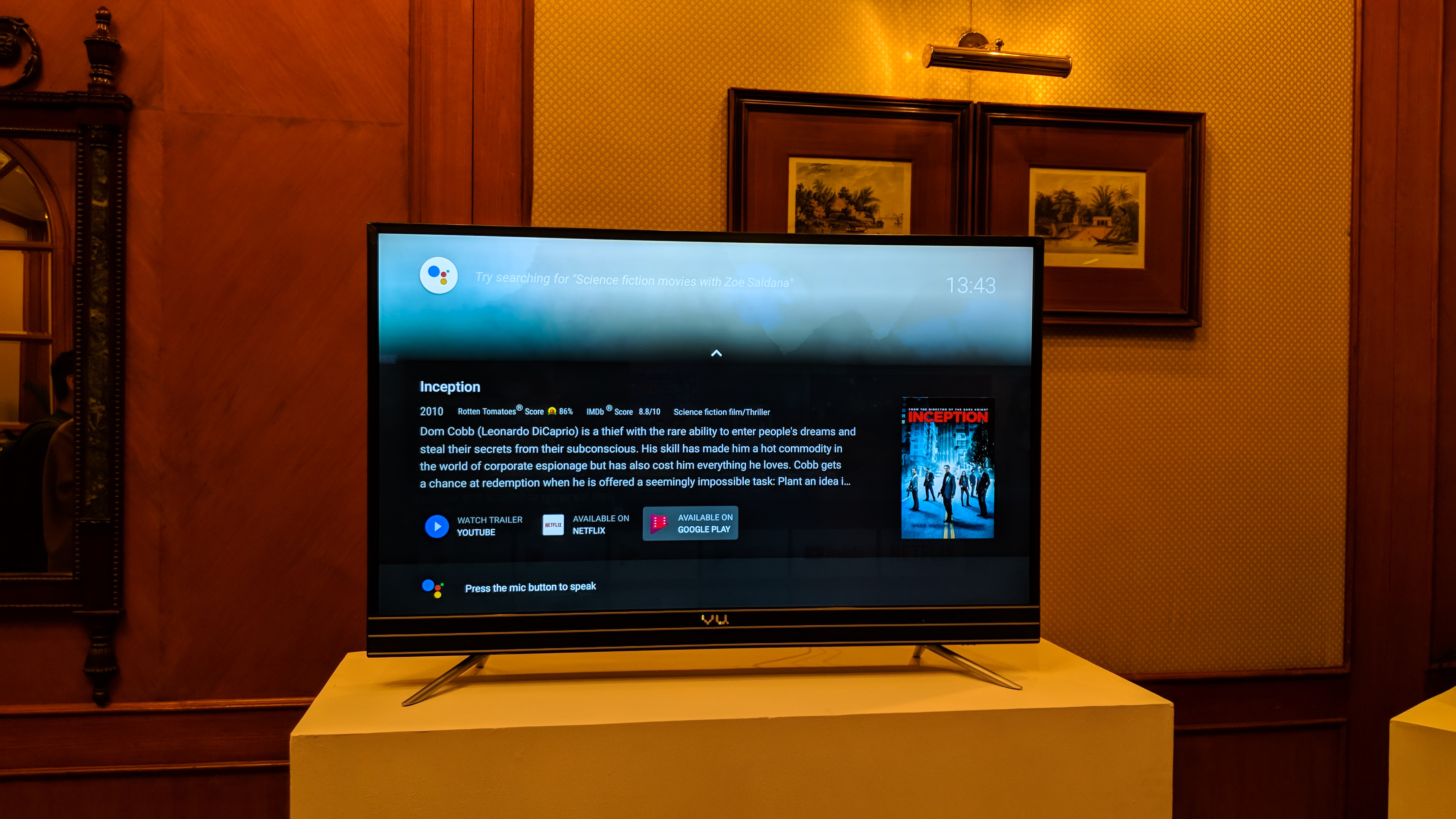Vu ActiVoice Android TVs launched, will go on sale from March 16
The TV's Feature 4K but don't support HDR

The new series of smart TVs launched by Vu Televisions runs on Android TV. Having taken an early cue from the competitive prices that Xiaomi has presented, the new Android TVs range has three variants touching three price points. The 43-inch variant costs Rs 36,999, while the 49-inch and 55-inch variants costs Rs 46,999 and Rs 55,999 respectively.
All three sizes have a 4K panel and will go on sale on March 16, exclusively via Flipkart.

Since the TVs run on Google's Android TV platform, there is now custom user interfaces (UIs) layered on top like Patchwall on Xiaomi TVs. Thus, these televisions have access to the complete Google ecosystem with the Play Store, Google Assistant, Chromecast support, and OS-wide voice control.
While all of this is fascinating, there is one issue that maybe seen as a problem for a lot of users. The voice control feature, called ActiVoice, doesn’t have operator integration on its platform, so cable content probably won’t sync with the smart interface of the TV.
On the flipside, the TV range does come pre-loaded with specific content providers, such as Hotstar, Netflix, and ALTBalaji among others.
Using the voice feature, users get the ability to search, browse and select content in 88 different languages. The search intelligence of the feature collates data from within different apps to curate a ‘recommended list’.
Aside from this, the new Vu TVs have 16GB of storage and 2.5GB RAM. In comparison, the Xiaomi Mi LED TV 4 only has 8GB of storage and 2GB RAM. The Vu televisions also features a 20W built-in sound bar that support DTS TruSound and Dolby Digital.
Sign up for breaking news, reviews, opinion, top tech deals, and more.
The Mi LED TV 4 has an edge over the Vu TVs when it comes to supporting HDR content. Both TVs may be 4K, but the Xiaomi TV should theoretically produce better colors and contrast when streaming high-definition content.
Apart from that, Vu is offering two separate remotes-- one for voice controls and other is for general operations. While some like having separate remotes, many find it needless.
Both companies essentially offer two very different viewing experiences and the user’s choice between them will depend largely on their own preferences.
Prabhjote Gill is the Senior Journalist at Business Insider India. She covering everything space, tech and defence at Business Insider India. She is also in-charge of allocating stories to junior writers.